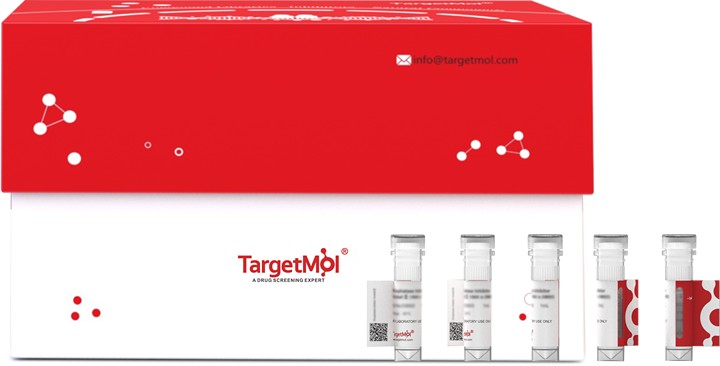Shopping Cart
Remove All Your shopping cart is currently empty
Your shopping cart is currently empty
Delta-theraphotoxin-Hm1a Protein, Heteroscodra maculata, Recombinant (His & Myc & SUMO) is expressed in E. coli expression system with N-6xHis-SUMO and C-Myc tag. The predicted molecular weight is 21.5 kDa and the accession number is P60992.

| Pack Size | Price | USA Warehouse | Global Warehouse | Quantity |
|---|---|---|---|---|
| 5 μg | $129 | 20 days | 20 days | |
| 10 μg | $216 | 20 days | 20 days | |
| 20 μg | $360 | 20 days | 20 days | |
| 50 μg | $543 | 20 days | 20 days | |
| 100 μg | $745 | 20 days | 20 days | |
| 200 μg | $1,070 | 20 days | 20 days | |
| 500 μg | $1,730 | 20 days | 20 days | |
| 1 mg | $2,530 | 20 days | 20 days |
| Biological Activity | Activity has not been tested. It is theoretically active, but we cannot guarantee it. If you require protein activity, we recommend choosing the eukaryotic expression version first. |
| Description | Delta-theraphotoxin-Hm1a Protein, Heteroscodra maculata, Recombinant (His & Myc & SUMO) is expressed in E. coli expression system with N-6xHis-SUMO and C-Myc tag. The predicted molecular weight is 21.5 kDa and the accession number is P60992. |
| Species | Heteroscodra maculata |
| Expression System | E. coli |
| Tag | N-6xHis-SUMO, C-Myc |
| Accession Number | P60992 |
| Synonyms | Kappa-theraphotoxin-Hm1a (Kappa-TRTX-Hm1a),Heteroscodratoxin-1 (HmTx1),Delta-TRTX-Hm1a,Delta-theraphotoxin-Hm1a |
| Amino Acid | ECRYLFGGCSSTSDCCKHLSCRSDWKYCAWDGTFS |
| Construction | 1-35 aa |
| Protein Purity | > 85% as determined by SDS-PAGE. |
| Molecular Weight | 21.5 kDa (predicted) |
| Endotoxin | < 1.0 EU/μg of the protein as determined by the LAL method. |
| Formulation | Tris-based buffer, 50% glycerol |
| Reconstitution | A Certificate of Analysis (CoA) containing reconstitution instructions is included with the products. Please refer to the CoA for detailed information. |
| Stability & Storage | Lyophilized powders can be stably stored for over 12 months, while liquid products can be stored for 6-12 months at -80°C. For reconstituted protein solutions, the solution can be stored at -20°C to -80°C for at least 3 months. Please avoid multiple freeze-thaw cycles and store products in aliquots. |
| Shipping | In general, Lyophilized powders are shipping with blue ice. Solutions are shipping with dry ice. |
| Research Background | Gating-modifier toxin that potently inhibits inactivation of the mammalian Nav1.1/SCN1A sodium channel (EC(50)=38 nM). Also moderately inhibits inactivation of Nav1.2/SCN2A (EC(50)=236 nM) and Nav1.3/SCN3A (EC(50)=220 nM) when the channels are expressed in oocytes without the beta-1 auxiliary subunit. Does not inhibit inactivation of Nav1.2/SCN2A when the channel is coexpressed with the beta-1 auxiliary subunit. When tested on Nav1.1/SCN1A channel, it enhances peak current amplitude and potently delays channel inactivation in a dose-dependent manner, leading to a large sustained current. It has no effect on the voltage-dependence of steady-state activation, and induces a depolarizing shift in the voltage dependence of inactivation. In addition, it does not modify the recovery from fast inactivation in Nav1.1/SCN1A. The binding affinity and subtype selectivity of the toxin towards Nav1.1/SCN1A channel is determined by residues within both the S1-S2 and S3-S4 loops of the domain IV voltage sensor of the channel. This toxin also weakly inhibits several subtypes of voltage-gated potassium channels. It moderately blocks Kv2.1/KCNB1 (23% inhibition at 100 nM), Kv2.2/KCNB2 (19.7% at 100 nM and 51% at 300 nM), Kv4.1/KCND1 (IC(50)=280 nM), Kv4.2/KCND2 (39% at 300 nM) and Kv4.3/KCND3 (43% at 300 nM). In vivo, intracerebroventricular injection into mice elicits convulsions, spasms, tremors and rapid death. When injected into mouse hindpaw, the toxin elicits an immediate and robust response to pain. However, intraplantar injection of toxin does not cause neurogenic inflammation or alter sensitivity to heat, indicative of a modality-specific effect on mechanosensitive neurons. In Dravet syndrome mice model, intracerebroventricular infusion of this peptide rescues mice from seizures and premature death. |
| Size | Quantity | Unit Price | Amount | Operation |
|---|

Copyright © 2015-2026 TargetMol Chemicals Inc. All Rights Reserved.